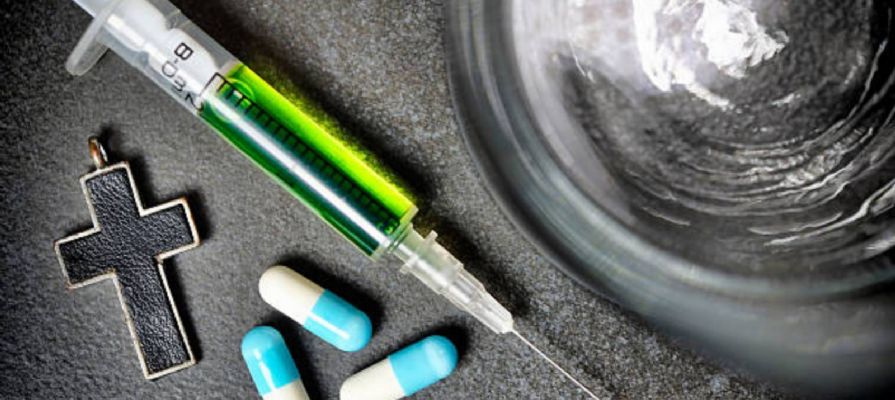
We explain what metamorphosis is and how it occurs in butterflies, frogs, bees and dragonflies. Also, “The Metamorphosis” by Kafka.
In biology , metamorphosis is the process of structural and physiological changes through which certain animals reach adult life , leaving behind the characteristics obtained from birth. It is a natural process, common to numerous species of insects, molluscs, amphibians , crustaceans , cnidarians, echinoderms, and tunicates.
The changes that this biological process implies can be more or less radical, depending on the type of metamorphosis:
- Complex or complete metamorphosis (holometabolism). It occurs when the characteristics of the initial stages of the animal, say, the larva or its primary stages, are radically different from those of adult life. That is, when the animal completely and significantly changes its ways of life , its anatomy and even its habitat , after going through a stage of inactivity and profound transformation.
- Simple or incomplete metamorphosis (hemimetabolism). It occurs, on the contrary, when the changes that the young form of the animal undergoes are not so radical, since its larval or young stage is not so different from its adult stage. Generally these stages are distinguished only in size, and the animal goes through different “molts” or partial changes, until it reaches adulthood.
Both types of metamorphosis are controlled by a diverse set of hormones that induce various reactions and biochemical changes in the organism . This process, moreover, is usually related to the climatic and biological cycles of nature , so that they always occur at a certain time and under certain conditions.
Metamorphosis has captivated the attention of the human being since ancient times, leading him to explain it through the most diverse theories, and also becoming a metaphor for change, growth and the cycle of life itself, especially the one that involves animals . like bees or butterflies , very present in human culture since its inception.
See also: Living beings
The metamorphosis of the butterfly
The butterfly usually locates its chrysalis under a branch.
The metamorphosis of butterflies is probably one of the best known and studied by humans, and in total it comprises the following stages:
- the egg. The initial stage in the life of a butterfly occurs when an egg is deposited in the environment (on a branch or a leaf, or wherever depending on the species) and then fertilized. Generally this occurs in strategic places, using viscous substances, and there are usually several eggs deposited. Each one matures, as the life inside it reaches the necessary point, and finally hatches, releasing a larva, commonly known as a caterpillar.
- The caterpillar. Butterfly larvae, called caterpillars, are very popular in gardens, and are elongated, worm-like animals with numerous legs and a robust, spherical head, with powerful jaws capable of crushing leaves, stems, and other plant fibers from which the caterpillar feeds. The caterpillars can have antennae, protuberances, very different and characteristic colors of the species, and many are even poisonous, but they all have their great objective in common: to eat. They feed frantically until their bodies accumulate the size and energyJust right to start the process of metamorphosis. Then, they find the right place, usually hanging upside down from a branch, and weave a cocoon of silks or other fibers that they themselves produce. There they lock themselves up to become adults.
- the chrysalis Once inside the cocoon woven by themselves, the caterpillars become chrysalis or pupae, and lead an immobile life that lasts about three weeks. During that time, the caterpillar’s tissues are modified, dissolved and built up, until it takes the form of a complete adult (imago). As this happens, the chrysalis also hardens, until, when the time comes, and thanks to the pressure that the animal exerts from within, it cracks, to let out an adult butterfly.
- The adult butterfly. After breaking the chrysalis, the butterfly unfolds its newly hatched wings and lets them dry and fill with hemolymph. Meanwhile, it fully emerges and, still hanging in place, prepares for flight. It is already an adult individual , ready to lead an aerial life, feeding on the nectar of flowers and other similar fluids, and to reproduce and start the cycle over again.
More in: Butterflies
The metamorphosis of the frog
In their larval stage, frogs are called tadpoles and they have a 100% aquatic life.
Another well-known case is that of most batrachians, frogs and toads. These amphibious animals are the evolutionary step between aquatic and terrestrial life, and for this reason they must always reproduce in the water. Its life cycle includes the following stages:
- The eggs. The life of the frog begins when a female deposits her eggs in a body of water, such as a river, a lake or a puddle of some kind, together with a male who immediately proceeds to fertilize them. The eggs then mature, as the life within them comes to a head, and hatch to release tadpoles.
- The tadpoles. This is the name given to frog “larvae”, that is, to their infant forms, which lead a 100% aquatic life. In fact, they have long, limbless bodies, similar to fish, equipped with tails, gills, and a vent to hold on to objects. The tadpoles live for about three months, feeding on everything possible, during which they gradually change, as the necessary energy for metamorphosis accumulates. Then, the changes begin: the hind legs begin to sprout, then the front ones, and the body increases considerably in size. The lungs develop within the young frog, as the tail and gills are gradually reabsorbed, preparing the animal for its future terrestrial life.
- The adult frog. Once metamorphosis is complete, an adult frog leaves the water and begins adult life in the dry, although returning every so often to hydrate and spawn, thus repeating its life cycle.
The metamorphosis of the bee
The bee undergoes metamorphosis inside a hive cell.
Despite living an organized life in their respective hives, the metamorphosis of honey bees is well known from biology. And it includes the following life cycle:
- The eggs. The bee eggs are always deposited by the queen bee, the only one capable of reproducing, inside special cells of the hive, intended to house the young, instead of honey. The eggs are white and flat, oval in shape, and hatch after about three days.
- The larvae. Just hatched, the larvae rest in the shape of a “C” in their respective cells, waiting for the worker bees to bring them their food: a kind of honey-based jelly, made by themselves. The larvae are white, elongated, and have a segmented body, but are limbless and totally blind. They will be fed in this way until they reach the size necessary to pupate or pupate.
- The chrysalis. When they are ready for metamorphosis, the larvae generate a characteristic odor that the workers recognize, and they proceed to seal each cell with wax, isolating the larva from the outside. Inside, hidden from light , the larva undertakes a period of inactivity and changes that varies according to the final role that the individual will have in the hive: workers, drones or queens.
- Adult bees. Once the stage of adulthood or imago is reached, the bees emerge from their cells to join the complex social life that characterizes these insects.
More in: Bees
The metamorphosis of the dragonfly
The adult dragonfly emerges from the water and loses its outer bark.
The dragonfly, popularly known as “damselfish” or “guacil”, is another insect that metamorphoses into insects is the dragonfly. An individual of this species can live more than a year, during which it will have completed the following cycle of life and changes, devoting the least amount of that year to adulthood.
- The eggs. Like the rest of the insects, the dragonfly is born from an egg, deposited by a fertilized female, since dragonflies mate in mid-flight. The eggs are generally deposited in aquatic plants , or released into the water of rivers, lakes or ponds.
- the nymph. The larval stage of the dragonfly is also known as the nymph, and begins when an egg hatches and releases a humpbacked, underwater living creature that feeds constantly and relies on smaller creatures. This life stage can be quite long, as metamorphosis does not start until weather conditions are right for the nymph to emerge from the water. But in the meantime, the nymph will go through a series of moults and transformations, which will strip it of its hump and provide it with small nymphal wings, as well as the tracheal apparatus necessary to replace the gills.
- The adult dragonfly. When ready to emerge from the water, the nymph will search for some aquatic plant to attach to and begin her ascent to the surface, during which she will lose her outer shell (called exuvia) and sprout from herself as an adult. Since then, she will have a flying life, although restricted to a few months: enough to reproduce and restart the cycle.
“The Metamorphosis” by Franz Kafka
The Metamorphosis ( Die Verwandlung in German), sometimes published as The Transformation , is a short story written by the Czech author Franz Kafka (1883-1924) published in 1915. It is probably the best known of all his work.
It is the story of Gregorio Samsa , a 23-year-old salesman, who one day wakes up in his bed transformed into a gigantic beetle . This makes it impossible for him to carry out his work, on which the entire family depended on him.
Finally, unable to communicate with his family and mistakenly injured by his father, who on one occasion believed that the insect respected his own mother, Gregorio Samsa dies from an infected wound on his side. His body is found by the saleswoman, who throws it away, and the family continues his existence, a little relieved deep down.
The metamorphosis has given rise to numerous interpretations, some of which are autobiographical, but it is considered one of the most outstanding works of German literature of the 20th century. Especially since it was written by a Bohemian Jew almost two decades before the tragic events of World War II , in which the Jewish population of Europe was enslaved and annihilated, treated as if they were less than human beings.
